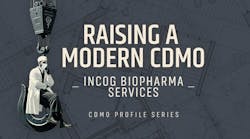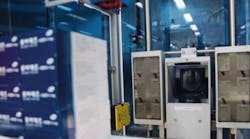A building management system (BMS) is essential to facility operations. Besides enabling effective control of all facility-related processes and equipment particularly those involving heating, ventilation and air conditioning (HVAC) a BMS can also:
- Help ensure adequate monitoring and control of GMP and non-GMP work areas;
- Provide real-time visibility into system performance within all facilities;
- Integrate facility-wide automation and help to eliminate islands of automation;
- Facilitate predictive maintenance and calibration efforts;
- Underpin site security and alarm management.
In doing the above, a BMS supports regulatory compliance efforts and, directly and indirectly, can lead to improved operational excellence and cost savings.
It was benefits such as these that prompted Organichem Corp., a contract developer and manufacturer of bulk APIs, to install a new BMS in 2002. The companys 220,000-square-foot Rensselaer, N.Y. site (see "A Site with History," below) had undergone $80 million in renovations over the past 15 years work that still continues. Also in 2002, Organichem began construction of a $20 million, 20,000-square-foot addition to house several new potent compound manufacturing suites. Three are up and running so far, with others in the planning stages.
Having a solid platform from which to automate the plant especially to maintain control of an active pressurization system has filled a void, says J.P. Monteau, Organichems director of engineering, environmental safety and health. We didnt really have anything before, he notes. We didnt handle potent drugs at that time. Our finishing area had a manually controlled air-handling system. The BMS has decreased the life cycle of successive projects and led to better facility control, improved maintenance and better decision-making, Monteau says.
In with the new
Organichem selected Johnson Controls (Milwaukee) Metasys BMS. The projects success required ensuring that efforts by Organichem, Johnson Controls and the mechanical contractor, FPI Mechanical, Inc. (Cohoes, N.Y.) were all coordinated. Having all three parties on the same page has been very important, says Eric Bratt, Organichems instrumentation and controls specialist.
The BMS eases the burden on Organichems legacy Foxboro I/A Series distributed control system (DCS). The DCS controls key processing parameters such as temperature, pressure and humidity in production areas, but was not meant to handle facility-wide needs. Since our DCS wasnt in all the buildings, we realized that we needed another tool that would allow people to look at the HVAC systems as we retrofitted the older areas, Bratt says.
During retrofits, Organichem has run the two systems in parallel. Operators within production suites have a window to both systems on their PCs. Metasys is favored for overlapping applications. Since it is Web-based, it offers a view of all production areas, labs, warehouses and offices. Several facilities at one site, or even multiple sites, can be controlled from one computer in one office, Bratt notes. It also means that supervisors can perform their pre-shift environmental checks from a single PC, rather than taking manual readings from temperature, pressure and other gauges situated throughout the facility.
BMS Best PracticesA few tips on the successful implementation of a building management system:
|
Bratt monitors all building functions from the workstation in his office. Throughout the continued system upgrades and expansions, it has been important to progress incrementally. Weve learned to break up the project into smaller chunks, he says. It shortens the time that you have to stop production, and limits the scope of problems that may occur. Validation can also be done step by step, simplifying the effort, he says.
Construction of Suite 208, the first of the new production suites, was accelerated to meet production scheduling for a new oncology drug. Installation and validation of the automation system was completed in just three months.
Johnson had done some engineering up front in order to secure the job, and staff put in extra hours to meet deadlines, says Jon Whitney, Johnsons business development director, life sciences, corporate clients group. Johnson also provided a standard documentation package for installation, operations and performance qualification to smooth FDA approval.
The key to completing the project within such a tight window was to create a sense of urgency about the project, Whitney says. He got higher-level project staff on board even if it meant he had to beg, borrow and steal them from other projects.
Having experienced staff involved ensured a smooth hand-off between commissioning and validation teams. It helped that the project manager was an engineer who assisted in writing test scripts for commissioning. These scripts were then used in validation.
Successive expansions and system installations have been completed within more conventional time frames. The second, Suite 209, took six months. The third, Suite 111, took even longer due to the need to maintain pressurization around pipes that penetrated the walls, Whitney says.
An important feature of the facility is its active pressurization system. Using air dampers, each room is controlled to a precise pressure, and a pressure gradient is maintained throughout, to keep either toxic particles in or contaminants out of a given area satisfying safety and quality people at the same time, Bratt remarks.
The Metasys system tracks pressure readings and initiates an alarm should tolerances be breached. If its not practical to have a screen in an area, well put a red or green light on the wall so operators can verify visually that everythings okay, Bratt says.
The site uses standard HEPA and ULPA filtering, and once-through air. To save on energy costs, the system manipulates air-control valves to reduce flow volume when a given suite is not in use, such as during product changeover.
This air-control feature has been added to the new suites, and is gradually being incorporated into existing ones as they are retrofitted. The cost of doing so is $6,000-$8,000 for each area, equal to the amount that could be saved in energy within a year, Whitney says.
Safety and security
Site security is maintained via a Johnson Pegasys security management system, which integrates with the BMS. Organichem has implemented multiple layers of security, particularly within the high-potency suites. Dead-bolt doors have been upgraded to more modern mechanical egress systems. Electronic security features include standard card-key or name-tag verification throughout the facility, as well as biometric hand-geometry scans for sensitive areas. Bratt says the scans are effective while not as invasive as, for example, fingerprint or retinal scans.
In addition, keypad password entries are required for entrance into some areas, or for inputting critical information into PCs, as specified by the companys permit to work regulations. The system is set up to alarm security personnel if it has been overridden or breached.
For product safety, Organichem makes full use of the alarm features in the building management system. Should conditions exceed accepted specifications, the system sends email notifications to a designated list of personnel, whether supervisors, technicians or maintenance workers. Organichem creates specific alarm paths depending on what the alarm event is, and when and where it takes place.
Organichem uses monitoring devices and sensors such as Foxboro transmitters, Phoenix Controls (Acton, Mass.) air-control valves or Vaisala (Helsinki) temperature and humidity sensors. Although this required higher upfront costs, Bratt says, lower calibration and maintenance costs should more than offset initial expenses.
Gowning up not required
Whenever possible, Organichem has mounted device controls outside production spaces, so that operators neednt gown up to work with them. Some greenfield facilities have done this in the interstitial spaces above the production facilities Whitney calls this the Rolls Royce approach. Instead, Organichem has established what Whitney calls gray spaces, adjacent to the suites for control devices for the air valves, temperature control and various process devices.
Having the support room so close to production has maximized flexibility, and the facilitys managers specified that, whenever possible, plug and play devices be used. These are important considerations in the contract manufacturing world, where any given production space must meet a wide range of containment requirements and heating and cooling needs for an ever-changing slate of products and processes.
The realities of contracting also mean that not all aspects of the facility can be ahead of the curve. Like other CMOs, Organichem has yet to automate batch recordkeeping, for instance. It is also cautiously studying the use of wireless devices for facilities control. We havent gone down that road yet, Bratt says.






